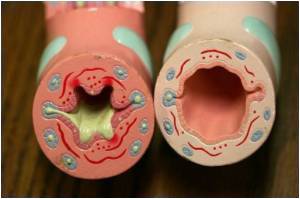A written action plan for asthma treatment, attached to the drug prescription, improves asthma control in children, says a new research.

The writing of action plan offers an additional advantage – it helps emergency physicians prescribe appropriately, in accordance to national asthma guidelines. "Considering its considerable benefit at low cost, I recommend the provision of the action plan at time of discharge after an emergency visit or hospital admission and after each preventive visit, for asthma," Ducharme said. Written action plans are available from the Government of Quebec's Institut national d'excellence en santé et en services sociaux (INESSS).
They come with three special features: a structured template for the management of short-term, long-term and non-drug treatment of the asthma, key health messages and a self-assessment asthma control tool, and a "triplicate form" format that gives a copy to the patient, the pharmacist, and the doctor. "The idea is to facilitate the provision of the plan by the physician and to encourage the pharmacist in reinforcing the plan – we're bringing the prescribing doctor, the pharmacist and the patient closer together," Ducharme explained. There are two kinds of form: one specifically designed to record discharge instructions after a visit for an acute asthma flare-up, and another for recording instructions during a regular office visit for asthma.The findings of this study apply predominantly to preschool-aged children, who comprised three-quarters of the 219 children who participated. "Whether results can be extrapolated to older children or adults in other settings, specialties, and medical conditions remains to be examined," Ducharme noted. "However, the research participants were similar to older populations with regards to poor use of daily controller medication, low action plan ownership, and few having attended asthma education."
Source-Eurekalert









